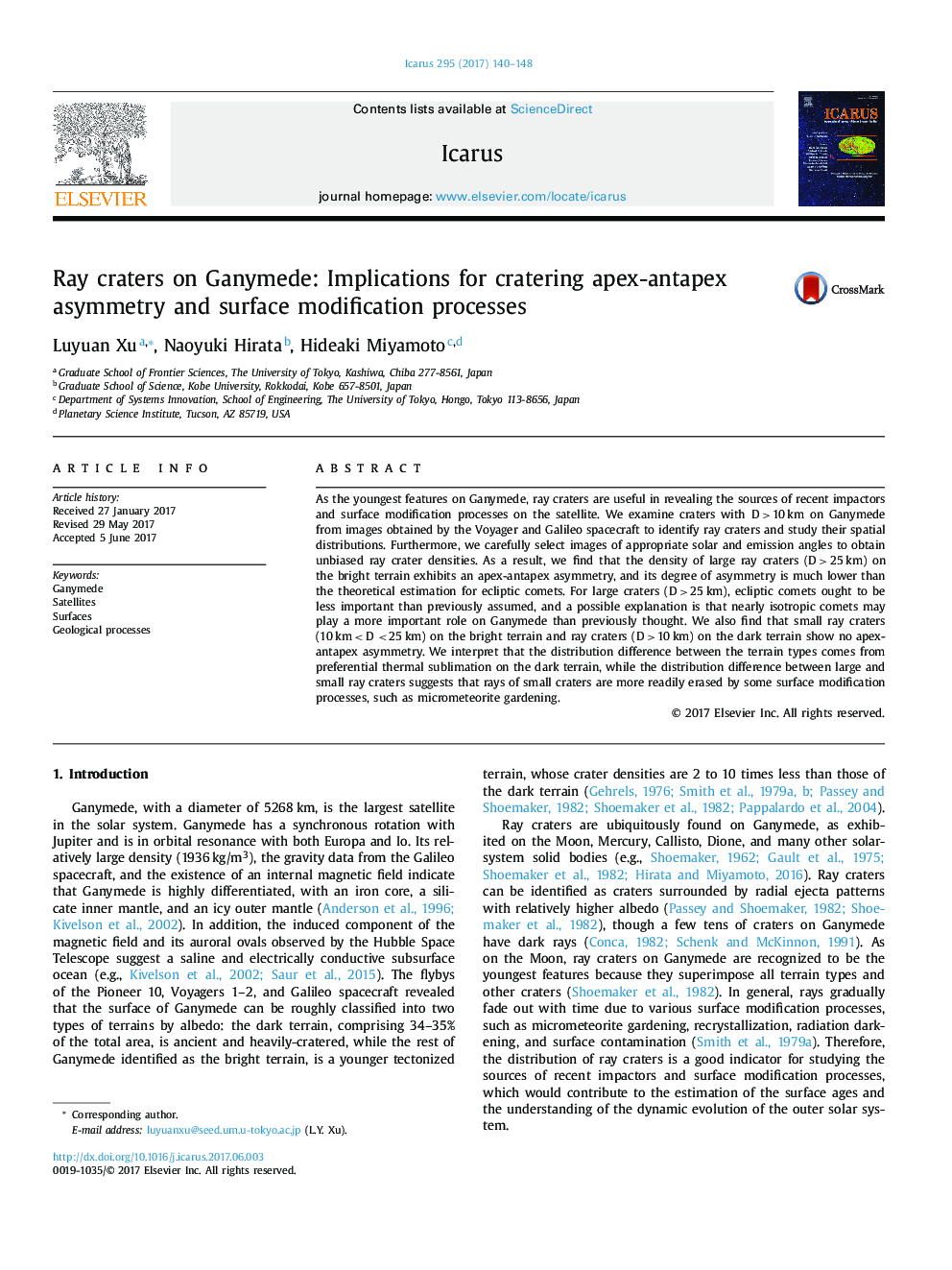| Article ID | Journal | Published Year | Pages | File Type |
|---|---|---|---|---|
| 5487026 | Icarus | 2017 | 9 Pages |
Abstract
As the youngest features on Ganymede, ray craters are useful in revealing the sources of recent impactors and surface modification processes on the satellite. We examine craters with D >â10 km on Ganymede from images obtained by the Voyager and Galileo spacecraft to identify ray craters and study their spatial distributions. Furthermore, we carefully select images of appropriate solar and emission angles to obtain unbiased ray crater densities. As a result, we find that the density of large ray craters (D >â25 km) on the bright terrain exhibits an apex-antapex asymmetry, and its degree of asymmetry is much lower than the theoretical estimation for ecliptic comets. For large craters (D >â25 km), ecliptic comets ought to be less important than previously assumed, and a possible explanation is that nearly isotropic comets may play a more important role on Ganymede than previously thought. We also find that small ray craters (10 km < D <â25 km) on the bright terrain and ray craters (D >â10 km) on the dark terrain show no apex-antapex asymmetry. We interpret that the distribution difference between the terrain types comes from preferential thermal sublimation on the dark terrain, while the distribution difference between large and small ray craters suggests that rays of small craters are more readily erased by some surface modification processes, such as micrometeorite gardening.
Related Topics
Physical Sciences and Engineering
Earth and Planetary Sciences
Space and Planetary Science
Authors
Luyuan Xu, Naoyuki Hirata, Hideaki Miyamoto,
